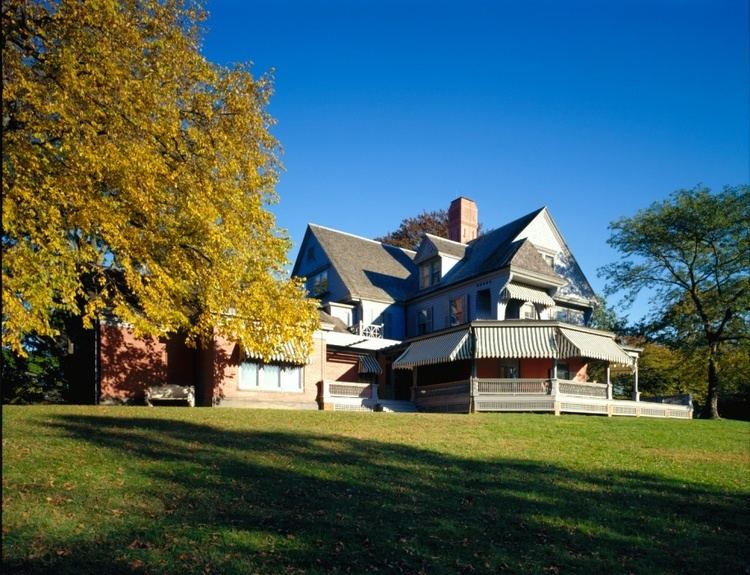Location Cove Neck, New York Built 1884 Visitation 38,009 (2005) Phone +1 516-922-4788 | Area 83.02 acres (33.60 ha) Architectural style Queen Anne Opened 1887 Architect Charles A. Rich | |
 | ||
Website Sagamore Hill National Historic Site Address 20 Saga Hill Rd, Oyster Bay, NY 11771, USA Hours Closed today MondayClosedTuesdayClosedWednesday9AM–5PMThursday9AM–5PMFriday9AM–5PMSaturday9AM–5PMSunday9AM–5PMSuggest an edit Similar Planting Fields Arboretu, Raynham Hall Museum, Old Westbury Gardens, Theodore Roosevelt Memorial, Theodore Roosevelt Birthplac Profiles | ||
Sagamore Hill was the home of the 26th President of the United States, Theodore Roosevelt, from 1885 until his death in 1919. It is located in the Incorporated Village of Cove Neck, New York, near Oyster Bay on the North Shore of Nassau County in Long Island, 25 miles (40 km) east of Manhattan. It is now the Sagamore Hill National Historic Site, which includes the Theodore Roosevelt Museum in a later building on the grounds.
History
Although a native of New York City, Theodore Roosevelt spent many summers of his youth on extended vacations with his family in the Oyster Bay area. In 1880, by then a young adult of 22, Roosevelt purchased 155 acres (63 ha) of land for $30,000 (equal to about $700,000 today) on Cove Neck, a small peninsula roughly 2 miles (3.2 km) northeast of the Village of Oyster Bay. In 1881, his uncle James A. Roosevelt had designed his estate home several hundred feet west of the Sagamore Hill property. In 1884 Theodore Roosevelt hired the New York architectural firm Lamb & Rich to design a shingle-style, Queen Anne home for the property. The twenty-two room home was completed in 1886 for $16,975 (equal to $452,478 today), and Roosevelt moved into the house in 1887. Roosevelt originally planned to name the house "Leeholm" after his wife Alice Hathaway Lee Roosevelt. However, she died in 1884 and Roosevelt remarried in 1886, so he decided to change the name to "Sagamore Hill". Sagamore is the Algonquin word for chieftain, the head of the tribe. In 1905 Roosevelt decided to expand the house, adding the largest room, called the "North Room" (40 by 30 feet (12.2 by 9.1 m)), for $19,000 (equal to $506,456 today). The home now has twenty-three rooms.
The house and its surrounding farmland became the primary residence of Theodore and Edith Roosevelt for the rest of their lives. Sagamore Hill took on its greatest importance when it became known as the "Summer White House" during the seven summers (1902–1908) Roosevelt spent there as President. Roosevelt died at Sagamore Hill on January 6, 1919, and was buried at nearby Youngs Memorial Cemetery.
On July 25, 1962, Congress established Sagamore Hill National Historic Site to preserve the house as a unit of the National Park Service. As with all historic areas administered by the National Park Service, Sagamore Hill was listed on the National Register of Historic Places on October 15, 1966. The home is open to the public by guided tour. Almost all the furnishings are original. Also on the site is the Theodore Roosevelt Museum, which chronicles the life and career of the President. The museum is housed in the 1938 house called "Old Orchard", the former residence of Brigadier General Theodore Roosevelt Jr. and his family.
